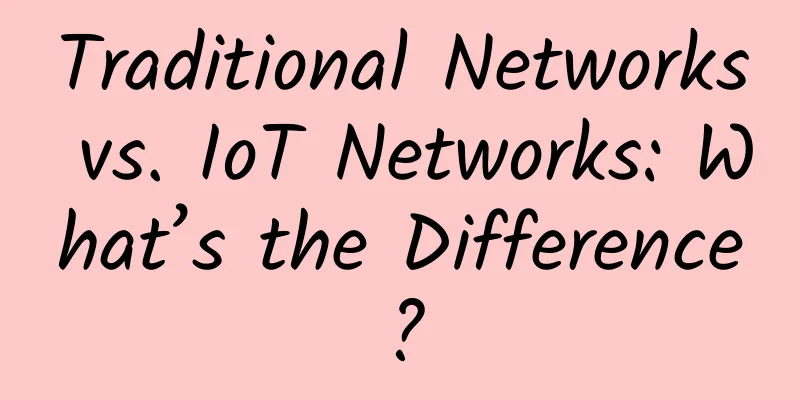Traditional Networks vs. IoT Networks: What’s the Difference?

|
IoT provides businesses with greater visibility, automation, and operational efficiency. Organizations that have begun to investigate the potential of deploying IoT must review the various IoT sensors and how these devices connect to and communicate with IoT server applications. Most people think of IoT networks as simply connecting to a traditional corporate LAN. While this is true in some cases, IoT network connectivity takes a broader approach to networking and expands connectivity options. What is a traditional network?Traditional enterprise networks usually consist of the following components:
LANs and WLANs are private wired and Wi-Fi networks that are typically deployed within corporate offices and branch offices. WANs are responsible for secure connections between LANs and branch offices. Finally, the Internet edge is the point or points where ingress and egress traffic can reach the Internet. What is the Internet of Things?The Internet of Things is a collection of autonomous devices connected to the internet that businesses can deploy to automate many business-related tasks. IoT devices use a variety of sensors, monitors, and other technologies to collect data. The data is then transmitted over the internet to a central repository management application for analysis. Depending on the role of the IoT system, it can use the analyzed data to initiate automated responses or make a variety of business-related decisions. IoT devices can use standard Ethernet, Wi-Fi, or many other wired or wireless connections and network protocols based on standards or proprietary. This diversity allows for greater deployment flexibility because IoT devices can often operate over low-bandwidth links. Traditional Networks vs. IoT: How Do They Compare?IoT systems are different from traditional networks, but they use network connections to operate. Devices in IoT systems rely on network connections to capture data that is transmitted to centralized servers for analysis. IoT devices can also react to various feedback based on processes driven by a centralized IoT management system. However, unlike traditional enterprise components, IoT architectures and devices can be distributed over a wide geographical range. Enterprises typically implement IoT sensors on traditional enterprise wired and Wi-Fi networks for communication access. However, organizations can also place IoT sensors on non-traditional networks, including public and private cellular, Bluetooth, Zigbee, and long-range WANs. Users can also place IoT devices in their home network as long as they can access IoT management services over the Internet. Because of this, IoT can be far beyond the coverage of traditional networks, making it a flexible choice for network deployment. |
<<: Does eSIM have a big impact on mobile network operators?
>>: Driving innovation and unleashing the unlimited potential of fiber optic LAN
Recommend
RackNerd Double 11 Promotion, Los Angeles VPS Annual Payment Starting from $12
RackNerd also launched a promotion for China'...
Seven requirements for next-generation edge networks
Enterprises that have embarked on digital transfo...
Analysis of Facebook data center practices and introduction of OCP's main work results
Confidentiality is a common practice in the data ...
What is the relationship between NFV and SDN?
NFV and SDN are popular technologies that have em...
At the 2017 Asia Pacific CDN Annual Conference, Yunfan Accelerator was awarded the title of "Excellent Service Quality Enterprise"
On November 14, 2017, the 2017 Asia-Pacific CDN A...
How the Network Supports Zero Trust
[[354213]] Building a zero-trust architecture typ...
Five hybrid video conferencing tips for effective collaboration
[[417444]] When Pixoul, a Dallas-based web design...
Grasp the pulse of the times and serve industrial development | Information technology innovation to promote new infrastructure sub-forum was successfully held
On November 27, the "2020 China Tongming Lak...
Global IoT connection technology market forecast by type in 2025
As the number of global IoT deployments continues...
How the wireless network market will develop in 2022
A wireless network is a computer network that re...
Network Lifecycle Management Guide
The network lifecycle management process helps ne...
ProfitServer Singapore VPS 50% off, unlimited KVM monthly payment starting from $2.88
First of all, I wish all my readers a happy Natio...
What will the Internet look like in 10 years?
The Internet has evolved tremendously over the pa...
Talk about what you want to know and don't know about SDN
SDN has been very popular for a while. For a whil...
The Winter Olympics is about to open, and the on-site communication network technology is deeply revealed!
In 11 days, the world-renowned Beijing Winter Oly...









